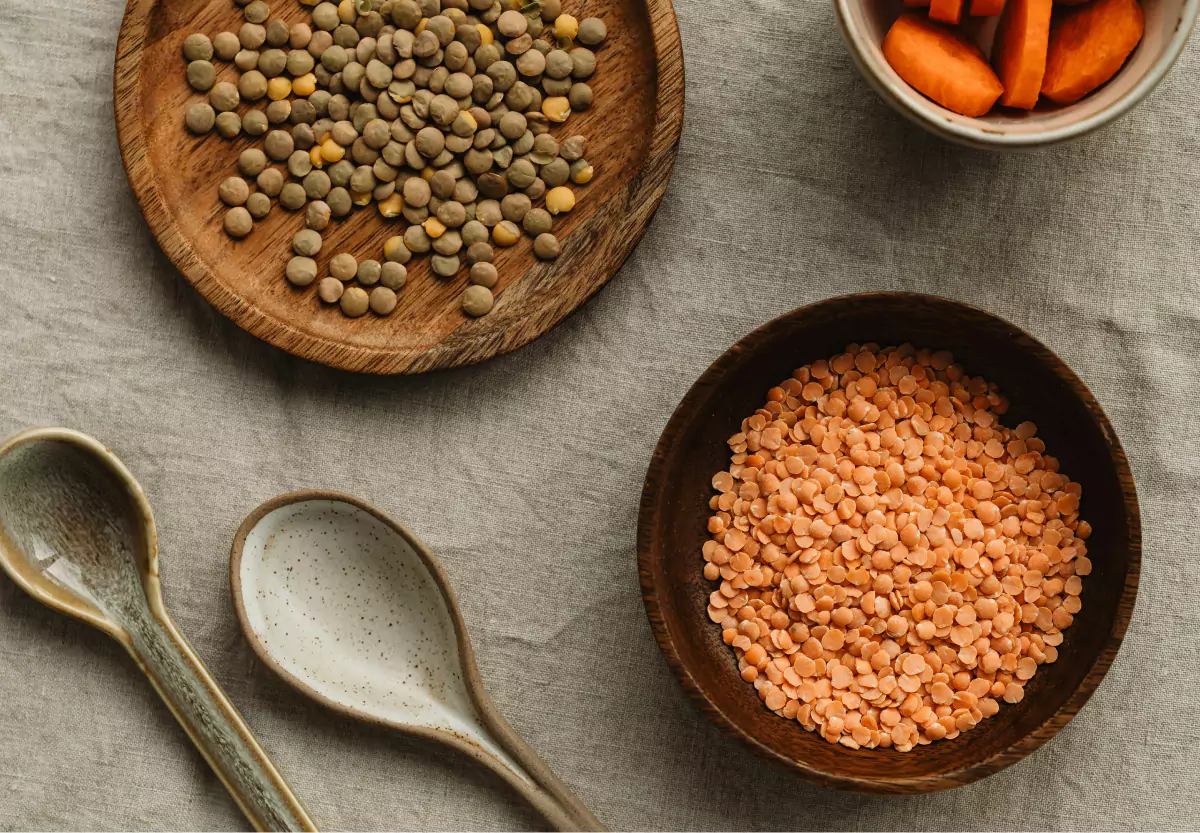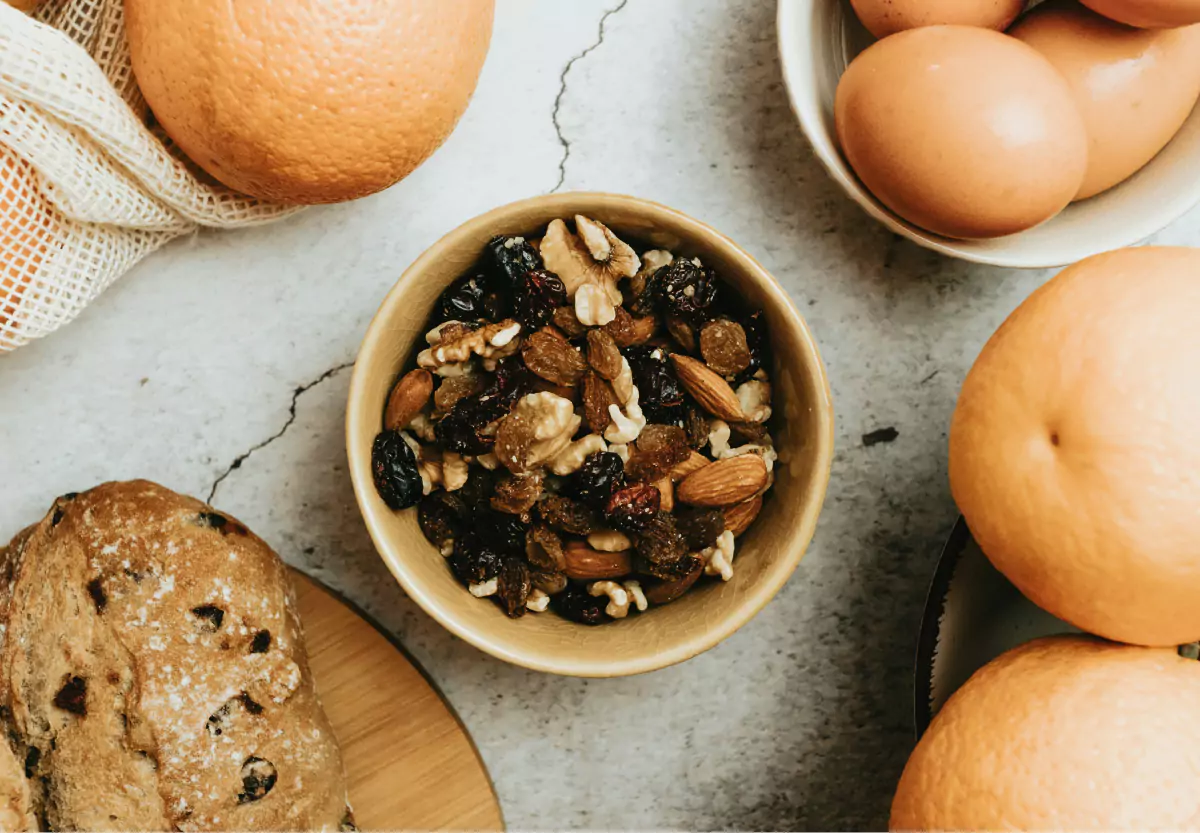Best Metabolism-Boosting Foods: According to a Registered Dietitian

Key Takeways
Search for the term metabolism boosting foods, and you’ll likely find endless lists promising to supercharge your calorie burn. But how much of it is actually backed by science, and what’s just wishful thinking?
We asked a registered dietitian to weigh in. Amanda Donahue, MS, RD, CD, explains,
“This is one of those topics where setting realistic expectations is important. No single food will overhaul your metabolism—but certain foods can play a supporting role, especially when part of a balanced diet and active lifestyle.”
In other words, food is fuel. Whether you’re following a metabolic diet, working with a metabolic expert for healthy metabolism, or have another health or weight management goal, finding foods that work for your body is most important. However, some foods also require more energy to digest, influence hormones involved in fat storage and energy use, or support organs (like your thyroid) that regulate metabolic function.
To get you started, here are eight foods with research-backed potential to support increasing metabolism for some, and what the science says about them.
1. Coffee
Caffeine, a natural stimulant found in coffee, has been shown in a study in The American Journal of Clinical Nutrition to increase resting metabolic rate (RMR) by 3 to 11%, at least temporarily. Resting metabolic rate is the number of calories your body burns at rest to maintain basic functions like breathing and circulation, so when paired with other healthy habits, this can lead to some difference in your daily energy expenditure, and in turn, weight loss.
Caffeine can also stimulate the central nervous system, which may encourage fat cells to break down fat. The effect tends to be more pronounced in lean individuals and may diminish with regular use as your body builds tolerance.
Registered Dietitian Tip
Don’t rely on coffee as your one metabolism hack, especially if you’re sensitive to caffeine. Remember, everyone responds to foods differently. But for regular coffee drinkers, it may offer a slight bonus boost!
2. Green Tea
Green tea contains caffeine and EGCG (Epigallocatechin gallate), a catechin that may promote fat oxidation. Some studies suggest that green tea extract can modestly increase calorie expenditure and fat burning, especially when paired with exercise (like the Journal of Nutritional Biochemistry found). However, the metabolic and health benefits are mixed, and research is ongoing here.
Registered Dietitian Tip
Think of green tea as a healthy hydration option with potential added perks, not a metabolism miracle. Instead of drinking lots more tea throughout the day, consider swapping out a soda for some green tea or adding green tea to your post-meal routine.
3. Chili Peppers
Chili peppers contain capsaicin, which can increase thermogenesis—your body’s heat production—and may slightly increase calorie burn. Capsaicin may also promote fat oxidation and reduce appetite in some people. However, like many of the foods on this list, research on its exact weight loss benefits is ongoing.
Registered Dietitian Tip
If you enjoy spicy foods, this is a flavorful way to add variety and a little metabolic edge to your meals. Remember that what a body needs to increase metabolism differs from person to person, so work with an expert to see if this is right for your health.
4. Lean Protein

Many sources of protein (especially lean protein like chicken, fish, eggs, lentils, and legumes) have the highest thermic effect of food (TEF), meaning your body burns more calories digesting it compared to carbs or fat. Eating protein may boost metabolic rate by 15 to 30% for some during digestion. It also supports muscle maintenance, which is critical because muscle tissue burns more calories than fat at rest.
Registered Dietitian Tip
Prioritize protein-rich foods at each meal! This is important for metabolism, satiety, blood sugar levels, glucose balance, and maintaining muscle mass and health. You can also try meal sequencing for better glucose balance.
5. Oily Fish
Oily fish, like salmon, sardines, tuna, and mackerel, are also great additions to a metabolism-boosting diet. These fish are rich in omega-3 fatty acids (which also help with heart health and cholesterol) and high-quality protein.
While omega-3s don’t directly rev up metabolism, they may support hormone regulation, inflammation control, and fat metabolism, indirectly aiding your body’s efficiency.
Registered Dietitian Tip
Aim for at least two servings of fatty fish per week. It’s a nutrient powerhouse that’s good for overall health, with the added benefit of adding to your toolkit to prevent heart disease and boost the metabolic benefits of other healthy foods you’re consuming.
6. Ginger
According to some small studies, ginger, like chili peppers, may increase thermogenesis and enhance energy expenditure. It may also lower blood sugar levels, and consistently high glucose can lead to insulin resistance and weight gain, which is a great benefit. Ginger can also support digestion and gut health and may help reduce inflammation, influencing metabolic health.
Registered Dietitian Tip
Try adding fresh or ground ginger to smoothies, teas, or stir-fries, not just for the zing, but for the subtle health support and a possible metabolism boost.
7. Leafy Greens
Leafy greens like spinach and kale are a great addition to your diet, whether you’re focusing on metabolism-boosting foods or not. These types of leafy greens are rich in iron and magnesium, two minerals essential for thyroid health, which can be a major regulator of your metabolism.
Greens are also low in calories and high in fiber, which supports digestion and satiety.
Registered Dietitian Tip
Iron from plant sources isn’t as easily absorbed as from animal sources, so pair your greens with vitamin C-rich foods (like citrus or bell peppers) for better absorption.
8. Nuts and Seeds

Nuts and seeds like almonds, Brazil nuts, and flaxseeds are also great additions to your meal plans. As a combination of healthy fats, protein, and fiber, they can help stabilize blood sugar, balance glucose, and support satiety, both important for metabolic regulation. Brazil nuts are particularly high in selenium, a trace mineral beneficial for thyroid hormone production.
Registered Dietitian Tip
Nuts and seeds are a great way to get healthy snacks in throughout the day, so go ahead and have a handful or add them to a bowl of Greek yogurt. However, remember to watch your portions, as nuts are energy-dense, and excessive amounts (depending on your individual nutrient goals) may not support healthy eating habits. But a small handful a day can go a long way toward supporting overall metabolic function.
So, Can Food Really Boost Your Metabolism?
The short answer: Yes—but not in the way most headlines suggest.
“No food will burn fat for you,” says Amanda. “But certain foods can work with your body (not against it) to support a healthy metabolism, especially when you focus on strength, balanced meals, and movement.”
Remember, the most effective strategy for boosting metabolism isn’t any one food—it’s your lifestyle. Prioritize protein, stay hydrated by drinking water regularly, incorporate physical activity like cardio and strength training into your routine, sleep well, stress less, and maintain good blood sugar balance. You’ll be supporting your metabolism where it counts.
Find the right Nutrisense programto turn insight into progress.
Encourage a Healthy Metabolism with Nutrisense

Metabolism-boosting foods aren’t magic, but they are meaningful, especially when chosen intentionally as part of a bigger picture. But you may need help building a meal plan that supports your metabolism, energy, and long-term goals. That’s where working 1:1 with a metabolic health expert comes in. When you sign up for Nutrisense, you can access 1:1 guidance from a registered dietitian and certified nutrition specialist to turn nutrition science into sustainable habits, via insurance-covered video calls.
You can also sign up for the CGM Program for access to glucose biosensors and the Nutrisense App to learn more about how healthy foods, exercise, and lifestyle habits react to your unique glucose levels. Coupled with video calls with a registered dietitian or certified nutritionist, you can learn not only what works for you but also how to train your metabolism with insights from a glucose-certified dietitian or nutritionist who gets you.
Go Beyond Glucose Data with Nutrisense
Your glucose can significantly impact how your body feels and functions. That’s why stable levels are an important factor in supporting overall wellbeing. But viewing glucose isn't enough. Nutrisense, you’ll be able to learn how to use your body's data to make informed lifestyle choices that support healthy living.
One-to-one coaching
Sign up to access insurance-covered video calls to work with a glucose expert: a personal registered dietitian or certified nutritionist who will help tailor your lifestyle and diet to your goals.
Monitor and measure what matters
With the Nutrisense CGM Program, you can monitor your glucose with health tech like glucose biosensors and continuous glucose monitor (CGM)s, and analyze the trends over time with the Nutrisense App. This will help you make the most informed choices about the foods you consume and their impact on your health.
Find your best fit
Ready to take the first step? Start with our quiz to find the right Nutrisense program to help you take control.

Liz has a Master of Science degree in Clinical Nutrition and Integrative Health and is a board-certified nutrition specialist (CNS) and a licensed dietitian nutritionist (LDN). As a nutritionist, Liz has educated and counseled 100s of clients in areas such as weight loss, hormonal imbalances, and gastrointestinal diseases.




